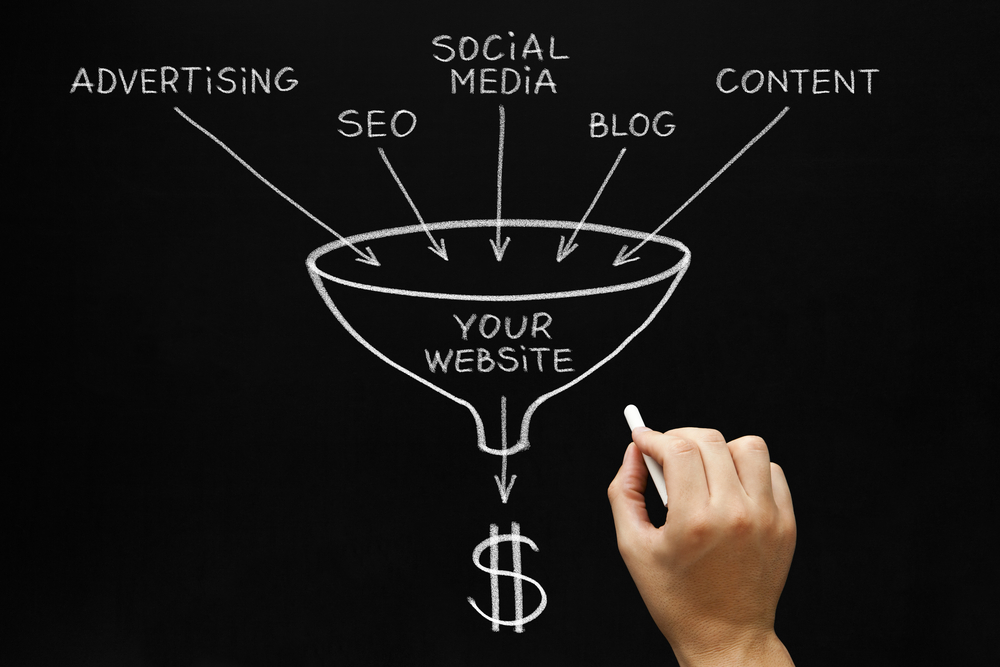In the bustling realm of the internet, where businesses strive to make their mark, two essential players come into play: the website and the funnel. While they both sound like digital jargon, they serve very distinct purposes in helping your business thrive.
In this blog post, we’ll learn the difference between website and funnel for your business and understand how they can elevate your business game.
What is a Website?
Imagine a website as your digital home base. It’s where you showcase your products, services, and all the cool stuff you want the world to know about. A website is like that dynamic storefront you walk by on the street – it’s open 24/7, inviting visitors to step in and explore.
Key Characteristics of Websites
Websites are like digital Swiss Army knives, offering a plethora of features:
Broad Information Hub
Websites are not just about selling; they’re about sharing information, educating your audience, and building credibility.
Diverse Content
Websites have pages like an ‘About Us‘ section for introducing your team, a ‘Blog’ where you share industry insights, ‘Contact’ pages for easy communication, and ‘Gallery’ sections to showcase your work.
Branding and Information
Your website is your digital brand ambassador, introducing your mission, and values while creating an online identity.
Passive Engagement
Visitors explore your website at their own pace, clicking on different pages as their interests dictate which usually depends on your content.
Varied Objectives
Websites are also about building relationships, sharing stories, and providing value. Whether it’s signing up for a newsletter or buying a product, websites offer multiple ways to interact.
What is a Funnel?
Having a funnel as your digital sales guide is like a friendly salesperson who takes you through a journey, helping you make an informed decision. A funnel is about guiding visitors towards a specific action, one step at a time.
Understanding Marketing Funnels
Funnels aren’t just about pouring people in; they’re about leading them through a journey:
Conversion Journey
Funnels are a carefully plotted path, guiding visitors from awareness to a specific conversion, like making a purchase or signing up.
Focused and Linear
Unlike a website’s buffet of options, funnels are streamlined. They focus on one thing: guiding visitors towards that ‘aha’ moment.
Tailored Content
Funnel content is like a tailor-made suit – it’s designed for each stage of the journey. It’s all about addressing specific needs and nudging visitors toward the ultimate goal.
Optimised for Conversions
Funnels are like those charming salespeople who know just what to say. They’re crafted to maximise conversions, with persuasive content and clear calls to action buttons.
Data-Driven
Funnels are backed by numbers. They thrive on analytics, tracking drop-offs, and fine-tuning the journey based on real-time data.
Clear Calls-to-Action
In a funnel, there’s no confusion about what to do next. The path is clearly marked, and every step has a specific purpose.
The Difference Between Website and Funnel
So, what separates these two digital powerhouses? Let’s dive into the nitty-gritty:
Website:
Broad Information Hub
A website acts as a multifaceted digital brochure that offers a rich array of diverse content, catering to a wide spectrum of purposes.
Passive Engagement
Visitors are afforded the freedom to navigate at their own pace, allowing them to delve into different sections based on their individual interests and preferences.
Interactive Brand Platform
Your website is like a canvas where you paint your brand story. It’s where you show off your creativity, values, and mission.
Funnel:
Conversion Focus
A funnel serves as a virtual guide, expertly steering visitors towards a particular action, often culminating in a conversion, such as signing up for a service or making a purchase.
Focused and Linear
Within a funnel, visitors are guided through a carefully designed sequence of stages, each step meticulously crafted to serve a distinct and defined purpose.
Tailored Persuasion
Funnels aren’t about offering choices; they’re about guiding decisions. They’re tailored to usher visitors toward the ultimate conversion.
Benefits of Having a Website
Before we delve further into the differences, let’s talk about the benefits of both these digital entities.
1. Reach Potential Customers Easily
A website casts a wide net, capturing various types of visitors. Whether they’re browsing for information, shopping, or just exploring, a website welcomes them all.
2. Build Brand Awareness and Credibility
Your website isn’t just an online brochure; it’s a canvas where you paint your brand identity. You share your story, showcase your work, and build credibility in the eyes of potential customers.
3. Increase Organic Traffic
Search engines love websites, and websites love search engines. With the right SEO strategies, your website can become a magnet for organic traffic.
4. Expand Your Customer Base
A website opens the door to a global market. Anyone, from anywhere, can stumble upon your online home and become a customer.
Benefits of Having a Funnel
On the flip side, funnels have their own set of benefits that can truly turbocharge your sales game.
1. Optimise Conversion Rates
Funnels are like finely-tuned instruments. With targeted content, well-placed calls to action, and conversion rate optimization, they lead visitors toward your conversion goals
2. Create a Visual Representation of the Sales Process
Ever wanted a visual representation of how your sales process works? Funnels provide just that. They’re like flowcharts for your customer’s journey, helping you identify where they might drop off.
3. Automate Email Content and Delivery To Targeted Audience
Funnels don’t rest. They work while you sleep, sending automated marketing emails to your leads and guiding them through the stages of the conversion process.
4. Establish a Business Model for Greater Profits
Funnels help you build a structured business model and conversion goals. By understanding the customer funnel stages and the conversion rates at each funnel step, you can predict your profits more accurately.
Strategies for Maximising Your Digital Marketing Strategy Using Both Website and Funnel
Integrated Branding
A great digital strategy starts with your branding elements, from colours to logos, which are consistent across both your website and funnel. During the awareness stage, visitors move from one to the other and they should experience a seamless transition.
Clear Navigation
Whether someone is exploring your website or progressing through your funnel, they shouldn’t feel lost. Make navigation intuitive, so visitors always know where they are and where they’re headed.
Strategic Content Creation
Your website content should tell your brand story, while your funnel content should guide visitors toward conversion. Creating valuable content aligns with each platform’s purpose and your marketing campaigns.
Optimise SEO
A well-optimised website can attract organic traffic, and a well-optimised funnel can guide potential customers toward the right keywords, increasing your chances of conversions.
Lead Generation
Use your website to capture leads through forms, and use your funnel pages to nurture those qualified leads toward a conversion.
Conversion Tracking
Set up analytics on both your website and funnel pages. Track user behaviour, identify drop-offs, and optimise your strategies accordingly.
A/B Testing
Experiment with different elements on your website and within your funnel. A/B testing can help you identify what works best for your audience.
Email Marketing Integration
Integrate your website’s email sign-up forms with your email marketing platform, and use your funnel to deliver targeted content through automated email sequences and reach a broader audience.
Retargeting Campaigns
Use retargeting pixels on your website to re-engage visitors who didn’t convert. Within your funnel, use retargeting to remind potential customers about their interests and guide them back.
Analytics and Insights
Constantly analyse the data from both your website and funnel. Insights from analytics can reveal areas for improvement and help you refine your strategies.
User Experience Optimization
A seamless user experience is crucial for both websites and funnels. Ensure your design and layout facilitate easy navigation as this lessens bounce rate and keeps visitors engaged.
Personalization
Utilise personalization techniques on both your website and within your funnel. Tailored content and recommendations can greatly enhance the user experience.
Choosing the Right Approach
In the world of digital possibilities, the question isn’t “website or funnel?” It’s “How can we leverage both for maximum impact?” Websites offer the buffet, while sales funnels serve the main course – the major conversion. So why not set up the restaurant and guide your guests to a memorable dining experience?
In the end, as a business owner, your digital success story is woven from the threads of both websites and funnels. They may play different roles, but together, they create the symphony that’s your online presence. Whether it’s the broad strokes of your website or the focused precision of your funnel, make sure each note is in tune to create a harmonious melody that resonates with your audience.




